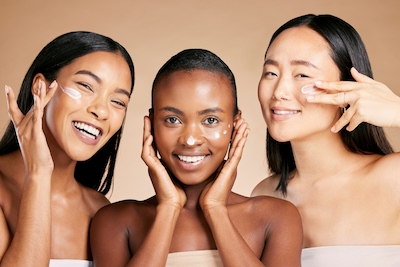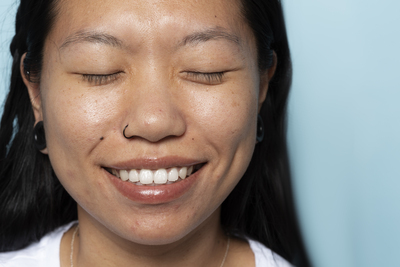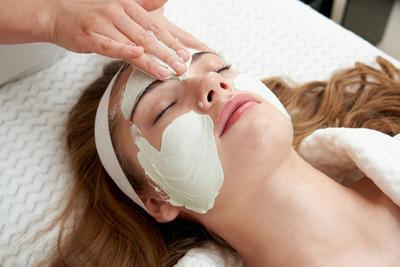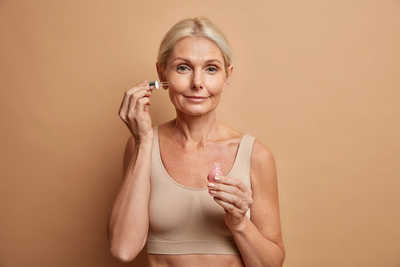Closed Comedones: The Hidden Acne You Might Be Treating All Wrong
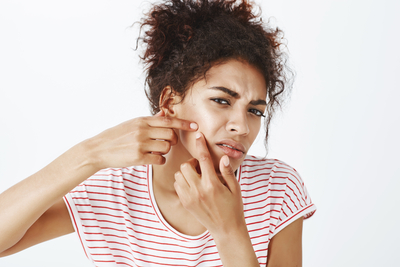
They don’t look inflamed, they’re not always red, and sometimes they don’t even come to a head, but they just won’t go away. Meet closed comedones, one of the most frustrating forms of acne that can linger beneath the surface for weeks (or months).
If you’ve ever run your fingers over small, rough bumps under your skin especially on your forehead, chin, or cheeks you already know how stubborn they can be. The good news? Once you understand what causes them (and what ingredients to avoid), they’re absolutely treatable.
Let’s explore what closed comedones are, what science says about treating them effectively, and how SkinBuddy helps you identify and manage them in your skincare routine.
What Are Closed Comedones?
Closed comedones, also known as whiteheads, are a type of non-inflammatory acne lesion. They form when dead skin cells, sebum, and debris clog your pores, creating a small, flesh-colored bump under the skin.
Unlike blackheads (open comedones), which are exposed to air and oxidize, closed comedones stay sealed beneath the surface, often making them hard to treat or extract.
According to a clinical review published in Clinical, Cosmetic and Investigational Dermatology, comedonal acne including both open and closed comedones is a precursor to inflammatory acne. This means if not treated correctly, those little bumps can turn into larger, painful pimples.
What Causes Closed Comedones?
Several factors contribute to their formation:
-
Excess Sebum Production: Overactive oil glands create a sticky environment for dead cells to clump.
-
Improper Exfoliation: Lack of exfoliation allows dead skin to build up.
-
Comedogenic Ingredients: Heavy oils or waxes in skincare and makeup can clog pores.
-
Hormonal Changes: Increased androgen levels stimulate sebum production.
-
Poor Cleansing Habits: Sleeping in makeup or using harsh cleansers can worsen buildup.
How to Identify Closed Comedones
Closed comedones appear as:
-
Tiny, flesh-colored bumps under the skin
-
Slightly rough texture, especially under light
-
Usually found on the forehead, cheeks, and chin
-
No redness or pus (unlike inflammatory acne)
They can persist for months and are often mistaken for small pimples or texture irregularities.
The Science of Treating Closed Comedones
The goal in treating closed comedones is to unclog pores and normalize skin cell turnover without over-irritating the skin.
A 2019 study comparing acne treatment options found that ingredients like retinoids, AHAs, and BHAs significantly improved both open and closed comedones by promoting exfoliation and reducing follicular plugging.
Here’s what works best (and why):
1. Retinoids (Vitamin A Derivatives)
-
How They Help: Increase cell turnover and prevent clogged pores.
-
Types: Retinol, adapalene, tretinoin (prescription).
-
Best For: Stubborn or persistent closed comedones.
-
Bonus: Also improves fine lines and pigmentation.
2. Exfoliating Acids (AHAs & BHAs)
-
How They Help: Dissolve dead skin and smooth rough texture.
-
Best Choices:
-
Lactic Acid (AHA): Hydrates while exfoliating.
-
Salicylic Acid (BHA): Penetrates pores to remove sebum buildup.
-
-
Tip: Alternate gentle acids with hydrating serums to prevent dryness.
3. Niacinamide
-
How It Helps: Regulates sebum production, strengthens the barrier, and reduces inflammation.
-
Bonus: Safe for daily use and pairs well with acids or retinoids.
4. Clay Masks
-
How They Help: Absorb excess oil and remove impurities.
-
Best Types: Kaolin or bentonite clay once a week.
5. Avoid Comedogenic Ingredients
Even the best skincare routine can fail if your products contain pore-clogging ingredients.
Common culprits include:
-
Isopropyl Myristate
-
Coconut Oil
-
Lanolin
-
Shea Butter
-
Certain Waxes and Silicones
Using products with these ingredients can continuously trap oil and debris, preventing your comedones from clearing.
Lifestyle Tips for Managing Closed Comedones
-
Cleanse Gently: Twice a day with a non-stripping cleanser.
-
Don’t Pick: Picking can lead to scarring or inflammation.
-
Stay Consistent: Most treatments take 6–8 weeks to show results.
-
Avoid Over-Exfoliating: Too much exfoliation can cause irritation and worsen bumps.
-
Change Pillowcases Often: Bacteria and oil buildup can transfer to your skin.
How SkinBuddy Helps You Manage Closed Comedones
Closed comedones require a delicate balance — effective exfoliation without clogging or irritation. That’s exactly where SkinBuddy comes in.
- In your Skin Profile, select Closed Comedones as your specific skin concern (it’s separate from acne or blackheads).
- When you scan any skincare or makeup product, SkinBuddy instantly analyzes every ingredient and flags whether it’s comedogenic, irritating, or beneficial for closed comedones.
- Each ingredient comes with a detailed explanation, for example, whether it promotes cell turnover or risks clogging pores.
- In Discover Ideal Match, you can find non-comedogenic exfoliants, gentle cleansers, and retinoid-friendly moisturizers that support your goals.
- Instantly see personalized recommendations and product ratings tailored to your skin type and comedone-prone areas.
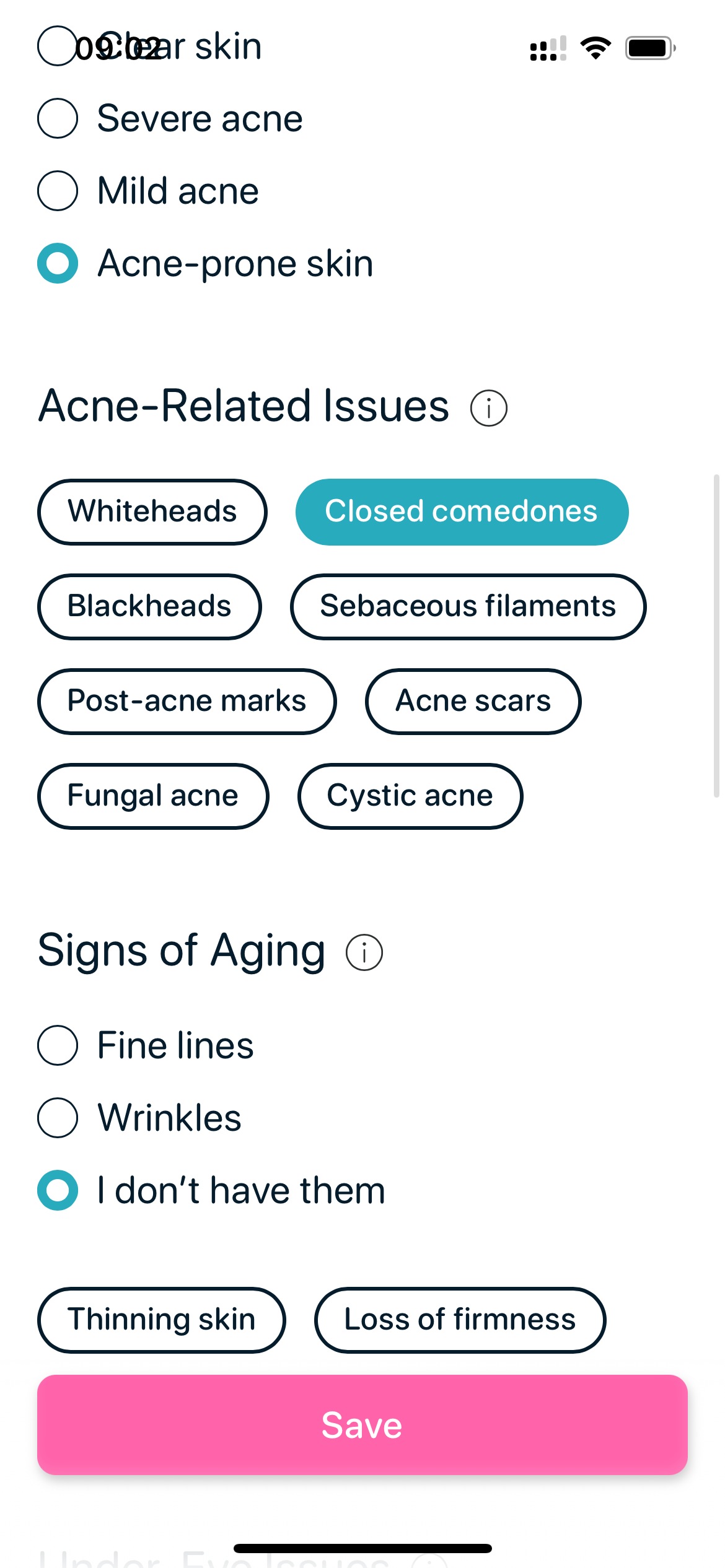
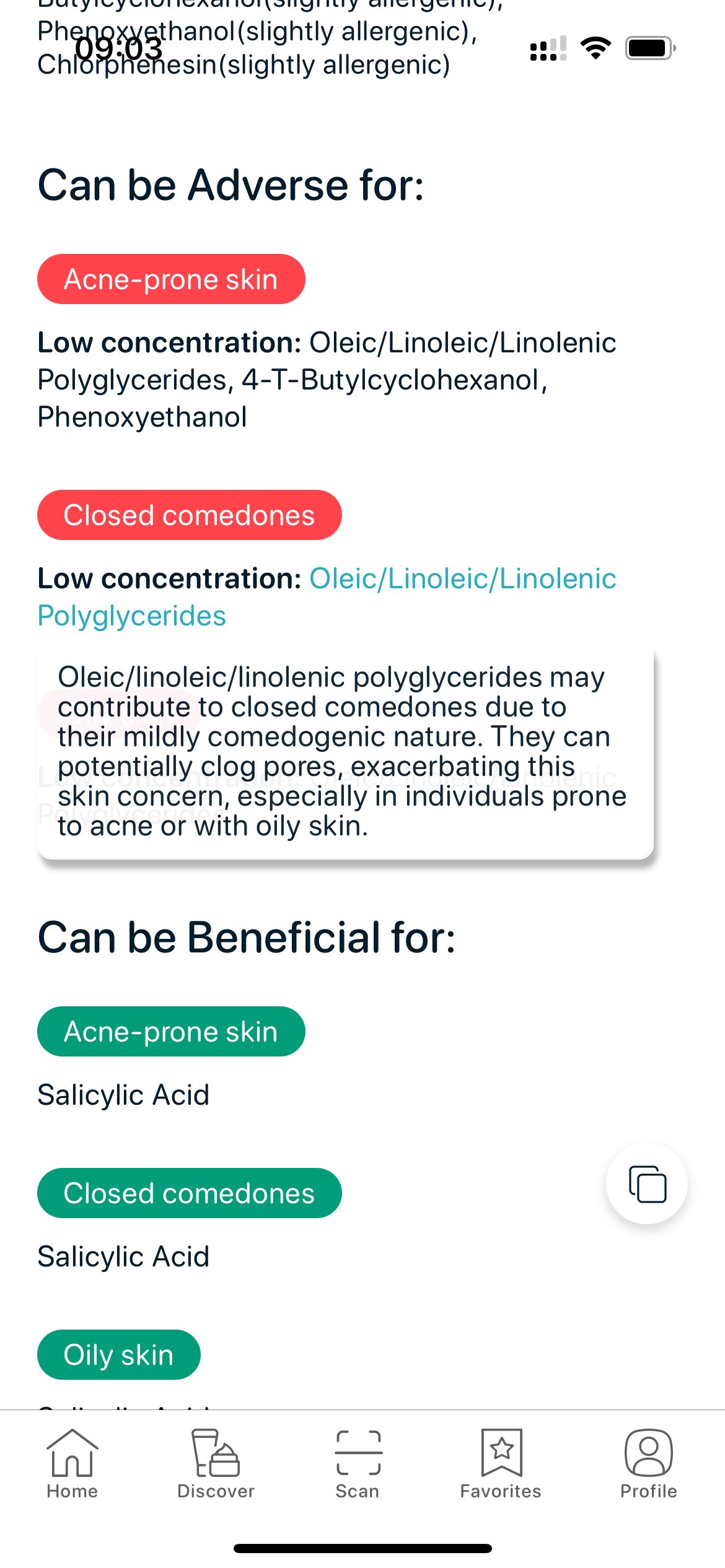
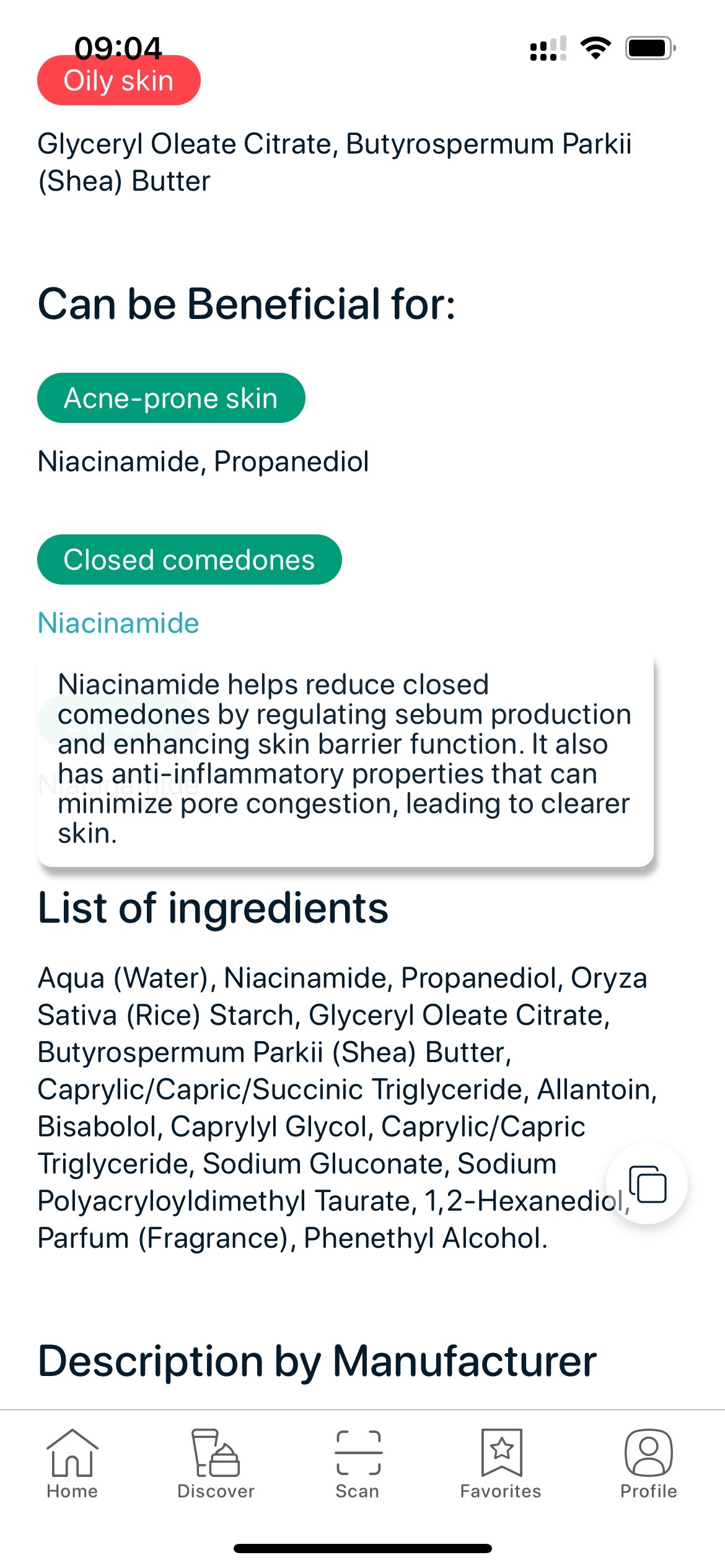
Try SkinBuddy to find out what works for your skin, and what doesn’t.
Scan your skincare, avoid pore-clogging or irritating ingredients, and discover smarter product matches. Open the web app or download the mobile app to get started.
Open SkinBuddy Web Appor
Check if your skincare suits your skin type, sensitivity, or acne-prone needs at skinbuddy.app and discover better options that match your routine and goals. SkinBuddy makes it easy, fast, and science-backed.
Scan to get started:

Web App (mobile only)

App Store & Google Play
FAQs About Closed Comedones
-
Are closed comedones the same as whiteheads?
Technically yes, they’re both non-inflammatory clogged pores, but closed comedones don’t always come to a visible head. -
How long does it take to clear closed comedones?
With consistent use of exfoliants and retinoids, improvement is typically seen in 6–8 weeks. -
Can moisturizer cause closed comedones?
Yes, if it contains comedogenic oils or waxes. Always look for non-comedogenic formulas. -
Should I get extractions?
Professional extractions can help but should be performed by a licensed esthetician or dermatologist to avoid scarring. -
Can diet affect closed comedones?
Some evidence suggests high-glycemic diets may worsen acne, but skincare formulation plays a bigger role.
Final Thoughts
Closed comedones can be stubborn, but they’re not unbeatable. With consistent exfoliation, pore-safe ingredients, and barrier-friendly products, your skin can become smoother, clearer, and more refined.
And with SkinBuddy, you don’t have to guess what’s causing your bumps. Our app shows exactly how each ingredient in your skincare affects closed comedones helping you build a smart, effective routine that works with your skin, not against it.
👉 Want to find out if your current products are clogging your pores?
Download the SkinBuddy app and discover comedone-safe skincare tailored to your unique skin profile.


